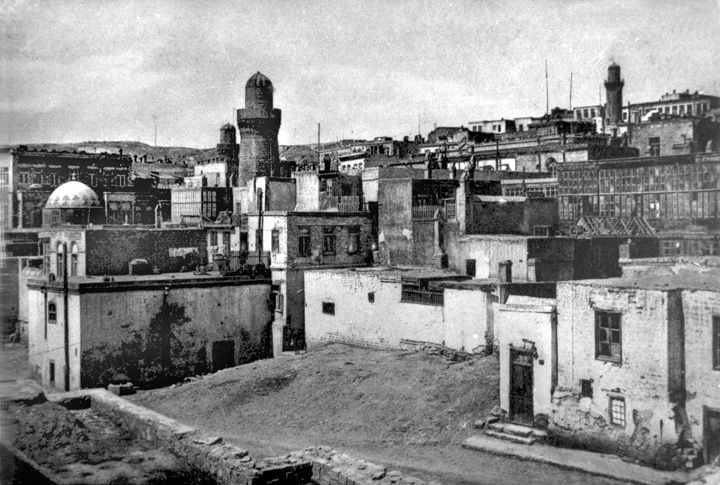Thousands of Azerbaijanis killed in Baku 100 years ago
Azerbaijan marks a tragic anniversary – the centenary of the March massacre in Baku. According to various estimates ranging from 3 000 up to 12 000 civilians, most of them ethnic Azerbaijanis, were killed in Baku.
The Soviet-time historiography claimed that those developments were part of the civil war on the territory of the former Russian Empire, which lasted from 1918 until 1922. However, starting from 1998, those events have been officially referred to in Azerbaijan as the ‘genocide of Azerbaijanis’.
The Armenian expert Vahan Melikyan is going to publish a book regarding the developments in March 1918. The author has granted JAMnews permission to reproduce an abridged version of its preface.
There are numerous factors that prevent the researchers from properly studying those developments. There are often discrepancies in the reports by different sources, who in turn also offer different interpretations of those developments. As a result, there are several versions of those events that largely contradict each other.

Political context in Baku in 1918
Azerbaijan had been a part of the Russian Empire for 90 years up until 1918. After the November 1917 revolution, when the Bolsheviks came to power in Russia, a certain power vacuum was formed in Azerbaijan.
It is believed that there was competition between a few political forces.
In fact, there were only two power structures:
The Baku Council of Workers’, Military’ and Seamen’s Deputies– a Baku-based body that was set up and controlled by the Bolsheviks.
The Trans-Caucasian Seym– a structure with a center in Tiflis (the present-day Tbilisi) that united different political forces.
Baku’s population at the time totaled about 400 000 people, with the Azerbaijanis (about 183 000 people), Russians (about 95 000) and Armenians (about 88 000) making the largest ethnic groups in the city.
In the Armenian community, the most influential was the Dashnaktsutyun party [the Armenian National Party which, for many decades, allowed for individual terror for the sake of achieving its own objectives – JAMnews].
The Musavat party (‘Equality’), which faught against Azerbaijan’s submission to Soviet Russia, was popular among the Muslim community.
The political crisis was conditioned by the presence of a large number of parties and organizations that were actively struggling for power. In addition, there was a food crisis, which actually fueled the tension in the city.
How it all started
WWI was coming to an end, the Russian Empire army units were returning from the front lines, including through the Baku port. Thus, there was a large Russian and Armenian militia [Muslims were not recruited in the army in the Russian Empire -JAMnews] in Baku, in spring 2018.
The Muslim military, i.e. a detachment comprising of 120 men from the so-called ‘wild division’, arrived in Baku end of March. The division was stationed in the city of Lenkoran, in the country’s south. They arrived via the Baku port for a funeral of one officer who was killed.
On 29 March 1918, as they were going to set off back to Lankaran, they had a quarrel with the members from a Bolshevik detachment. As a result, the Muslim officers weren’t allowed to sail back to Lankaran. Guns were drawn and fired. The Bolsheviks then seized their weapons.
Then the unrest began in the city: the Baku Muslims demanded their weapons back. Rallies and assemblies were organized. Public figures and leaders from various organizations and associations tried to prevent bloodshed. The Bolsheviks soon agreed to return the weapons.
However, despite that, armed clashes began in the city.

Who started it first?
All the available evidence of who started shooting first are diametrically opposed to each other. The parties accuse each other.
Most eyewitnesses claim that the shooting continued throughout the night. The Bolsheviks assaulted the houses where the members of the ‘Musavat’ party were hiding (this party actually represented the ethnic Azeris). The latter returned fire. The next morning, the Armenian Dashnaktsutyun party joined the Bolsheviks. Thus, what the Bolsheviks called the ‘battles’ actually reshaped into ‘pogroms’ on ethnic grounds.
Political leaders tried to stop the shooting, but in vain. All meetings were thwarted, as the delegates couldn’t reach the venue because of the intensive gunfire.
The day after the shooting began, even the Bolsheviks could no longer control the situation in the city.
Upon the beginning of armed clashes, the Bolsheviks-controlled the Baku Council of Workers, Military and Seamen’s Deputies immediately set up the Revolutionary Defense Committee and transferred the power to it for the duration of the clashes. The committee were comprised of the leaders of key political parties represented in the Baku Council.
On 1 April the Muslim leaders were familiarized with the Soviet government’s ultimatum, read out on behalf of the Baku Council:
- to recognize the Soviet leadership;
- to withdraw both the Muslim and the Armenian troops from the city;
- to take urgent measures to restore the railway in the region.
The Muslim leaders accepted these conditions.
The city started to gradually recover on 2 April. The dead bodies were removed from the streets and the burned buildings were inspected.
Consequences
The consequences of these developments were described differently by the parties involved.
The Bolsheviks believed that they had successfully conducted the operation by suppressing the Musavat’s resistance and gaining control over the city.
The Musavat leaders were finally convinced that the biggest danger for Azerbaijan comes from the North, from Russia.
Ronald McDonnell, the British Consul to Baku, wrote that the Armenian Dashnaktsutyun’s support for the Bolsheviks was ‘the greatest mistake in their history’.
All those developments eventually led to strengthening of the Bolsheviks’ positions in Baku, allowing them, in three weeks’ time, to set up the Baku commune and pursue Soviet Russia’s policy in Baku. However, the ‘March massacre’ also served them badly, because they lost the regional support.



















